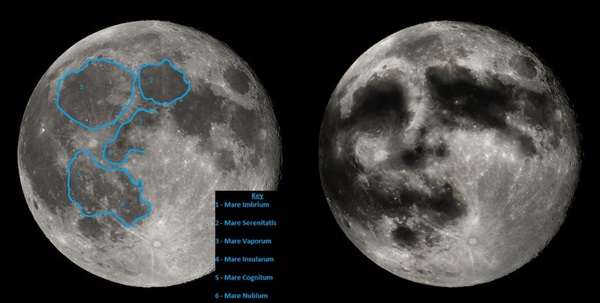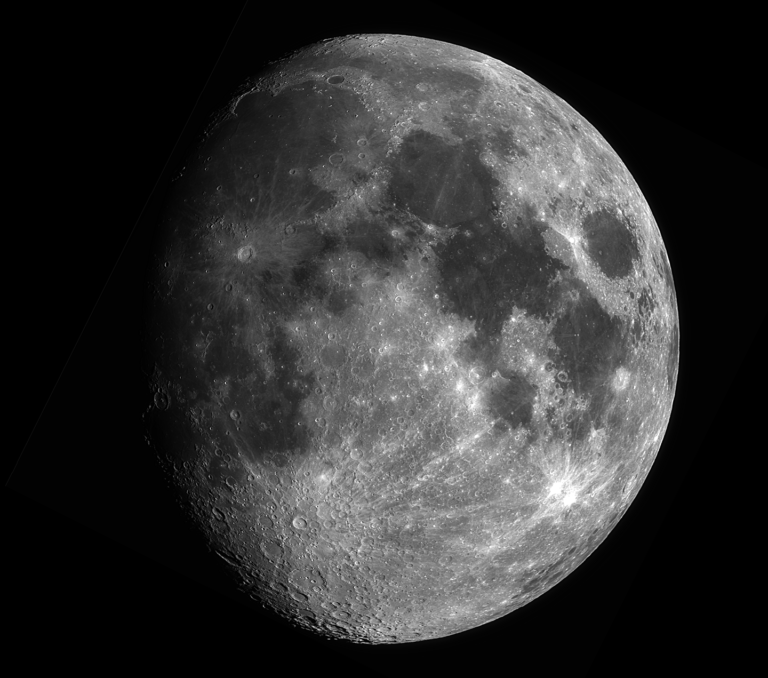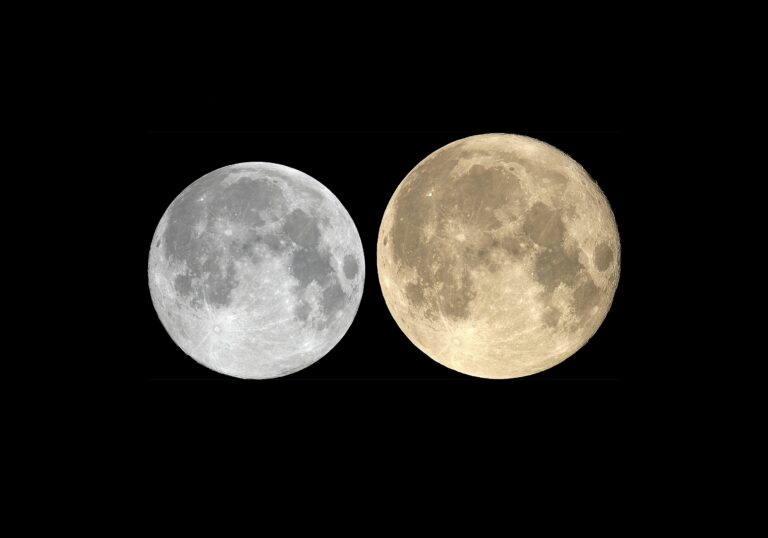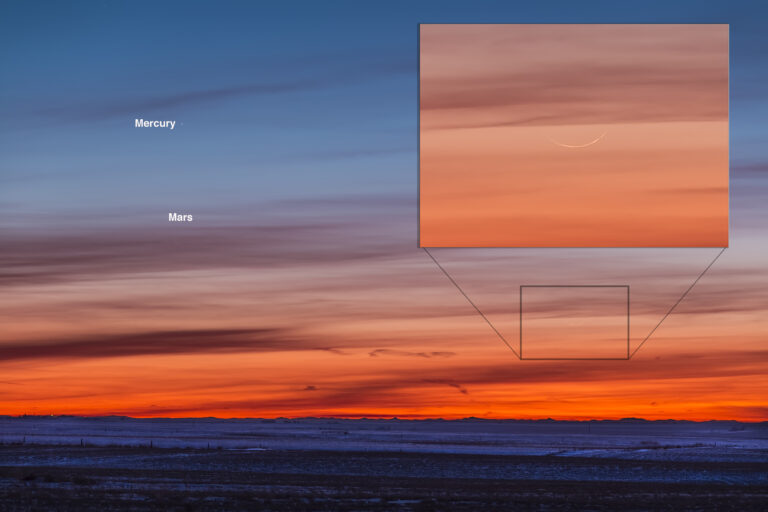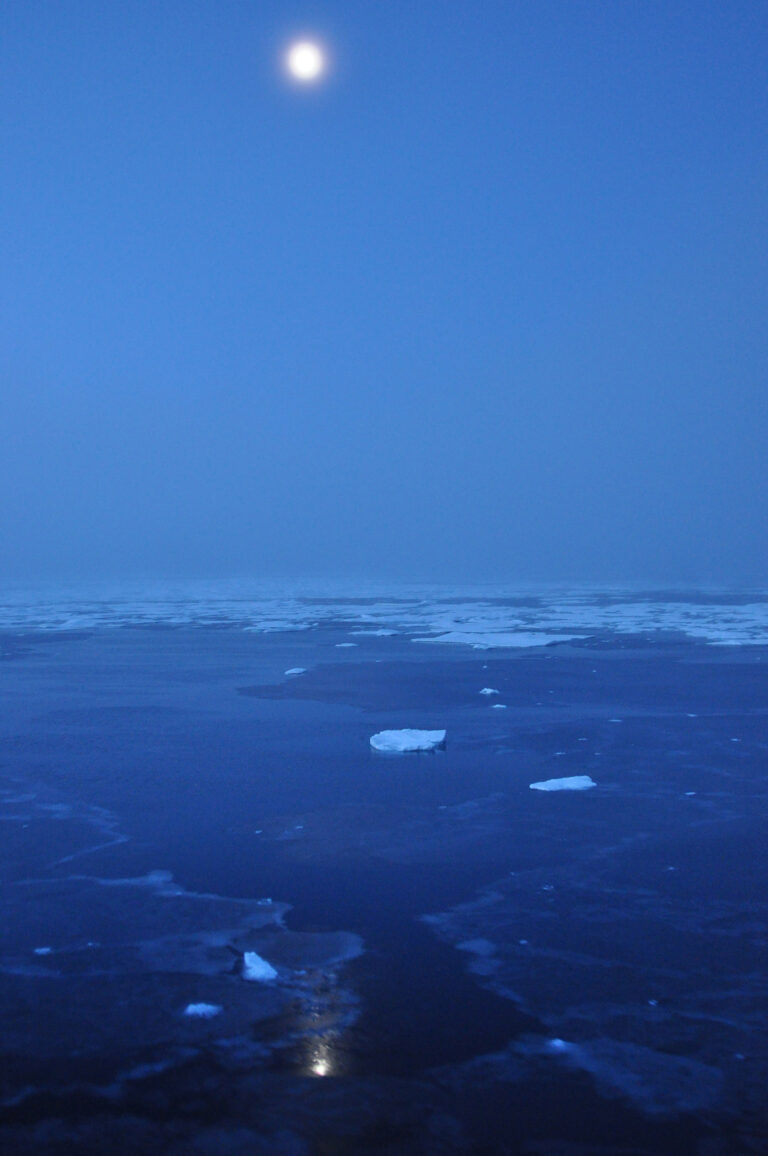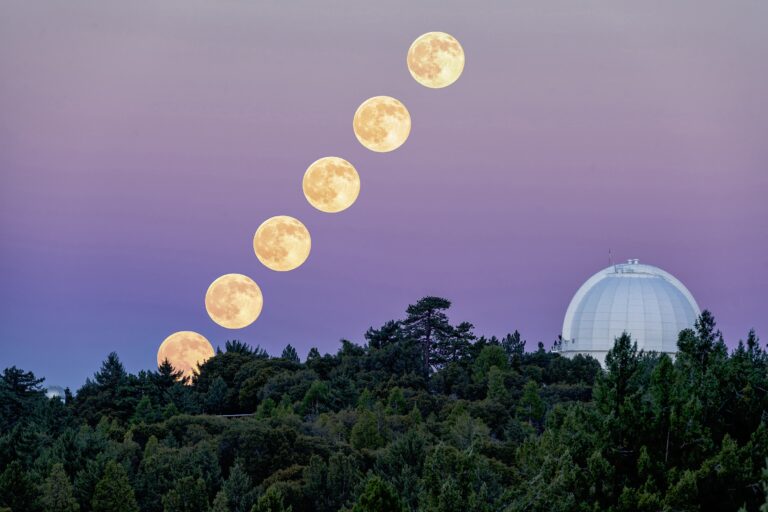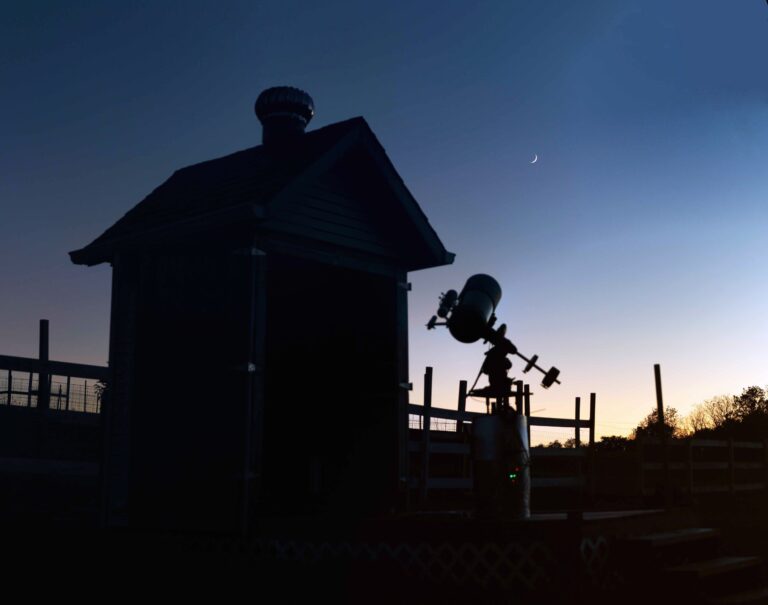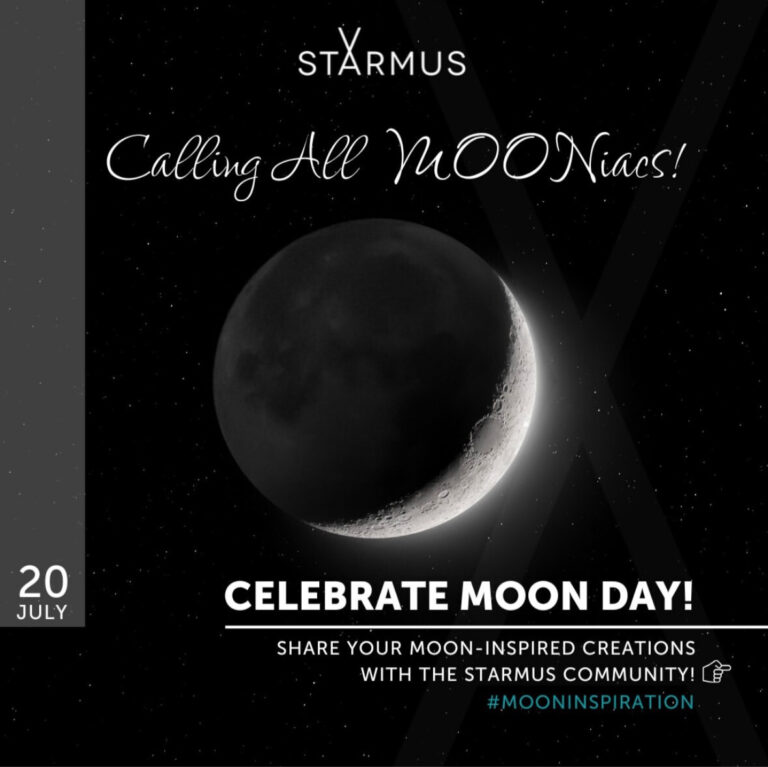Full Moon occurs at 10:53 p.m. EDT. At that moment, our lone natural satellite will lie 245,106 miles (394,460 kilometers) away.
At this time, the Sun stands high above the lunar surface, a condition similar to midday here on Earth. Shadows at this time are shortest, so you’ll actually see the least amount of detail during Full Moon.
That said, two features actually stand out better at this time: the lunar maria (seas) and lunar rays:
- In the first case, lava on the floors of the maria appears much darker than the surrounding highlands, so the contrast between the maria and the highlands is highest at Full Moon.
- In the second case, sometimes a dark surface covers lighter material. If, as has happened millions of times, a meteor hits the Moon, the impact can splash some of what’s underground across the landscape. And the bigger the meteor, the longer and brighter the splash. Astronomers call such ejecta “rays.” Most resemble the spokes of a wheel and extend for many times their crater’s diameter. And Full Moon is the best time to view them.
During the Full Moon, observers also have an opportunity to experience a psychological phenomenon known as pareidolia, which is when the human mind attempts to create a familiar pattern when no such pattern exists.
Though generations of humans have seen some version of the “Man in the Moon” on the Moon’s surface, the lunar seas that make up the famous face were not placed by a cosmic painter to achieve this effect. Instead, the face stems from our minds desire to place what we see into some sort of familiar context.
[Editor’s note: This article was updated Feb. 1, 2023.]

